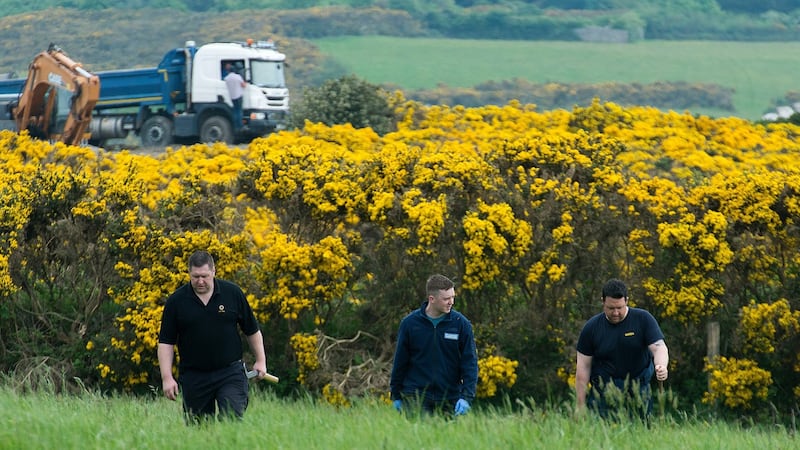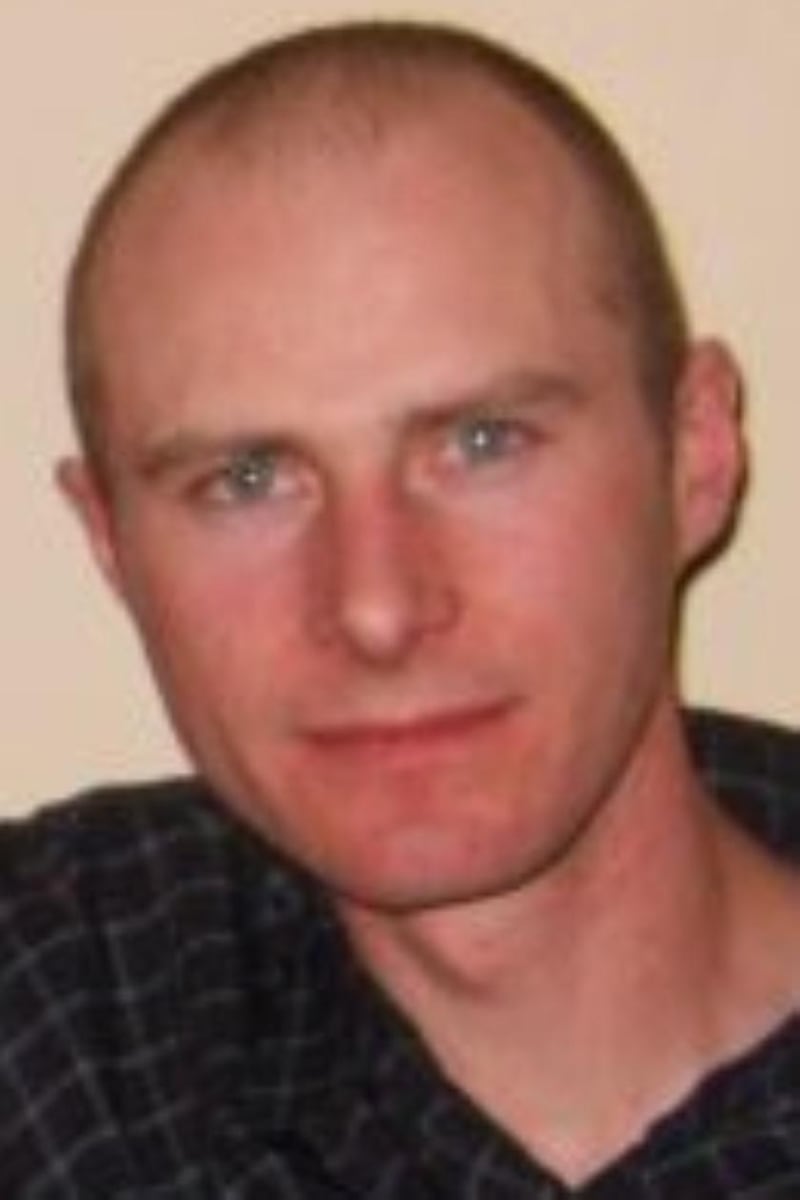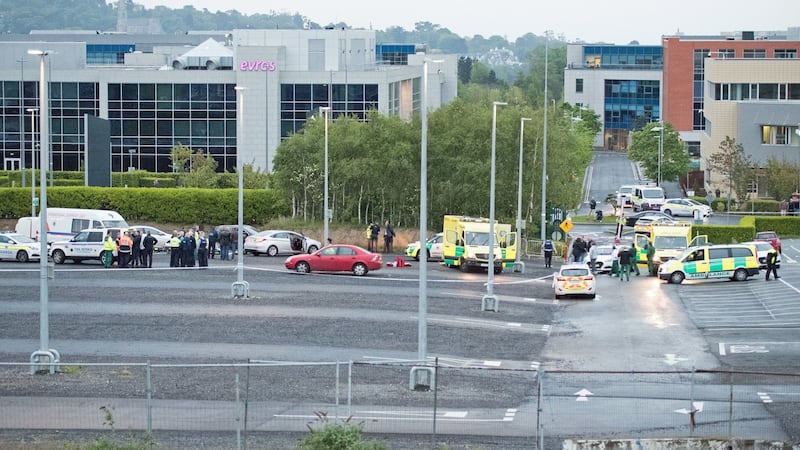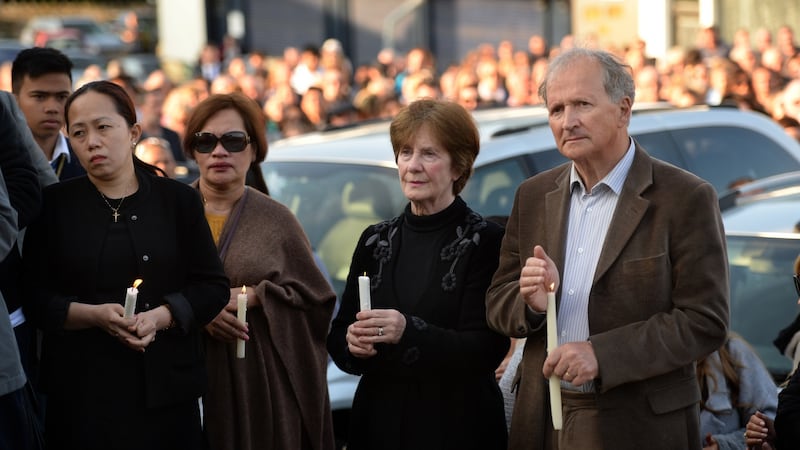The victim
Jastine Valdez was raised by her grandmother. Her parents Danilo and Tess lived in the town of Aritao in the north of the Philippines, and spoke Ilocano, the country’s third most spoken language.
But shortly after Jastine’s birth in 1994, her parents moved to Ireland so they could earn money and send it back home. They left Jastine, their only child, in the care of her grandmother, and the two grew close.
It is common for Filipinos living in Ireland to have children still living in their home country. As she grew up Valdez stayed in regular contact with her parents, and in later years used Facebook to video-chat with them daily.
After she graduated from high school Valdez decided to join her parents in Ireland and to enrol in college here. She arrived three years ago, and started in Tallaght IT in 2017, studying accounting and finance.
To help fund her studies, Valdez worked part-time in a restaurant in Bray, Co Wicklow. She was often seen waiting at the bus stop in Enniskerry, a short walk from her parents’ home.
The spot where Valdez was attacked and kidnapped is also only about 50m beyond the entrance to Powerscourt Gardens, one of the most popular visitor attractions in this part of the country
At 6.15pm on Saturday May 19th, the 24-year-old had just got off the bus from work and was walking home along the Kilcroney Road, between Enniskerry and Bray. The road, known officially as the R760, is beautiful in summer. The houses are set well back. Overhead, birds sing in the canvas of leaves covering much of the route. The tree cover allows only partial sunlight through.
Though the road can get busy with tourist traffic heading to Glendalough and the rest of Wicklow, it’s not enough to disturb the hedgerows, which teem with life at this time of year. The road widens just before Enniskerry, a picturesque village of 1,800 people. On one side is a graveyard with a banner advertising a car boot sale.

On the other is a pile of bouquets, placed there to mark the spot where Mark Hennessy punched Jastine Valdez, dragged her into his car and drove away.
The barely 5ft tall Filipina stood little chance against Hennessy, a rangy, physically fit builder aged 40.
Within a little more than 24 hours both Valdez and Hennessy would be dead.
The abduction
The makeshift shrine to Valdez in Enniskerry’s town square has been growing all week. On Wednesday, a steady stream of Irish and Filipino people arrive, light candles and pause in front of a photo of Jastine, the same one released by gardaí during the frantic search for her last weekend.
A woman weeps over tealights arranged to spell out the initials JV. Her two children start to fidget and complain but she bribes them into silence with the promise of ice cream.
A local man sits on a nearby bench surveying the scene. He seems eager to talk. “You’re after driving in on that road there now. How many times did you have to stop and give way to other cars?” he asks. “Do you see what I’m saying?”
Hennessy, the man is suggesting, chose a bad place to abduct someone and hope to get away with it. The roads coming into Enniskerry are so narrow that one car often has to stop and pull onto the verge to allow an approaching car to pass.

This manoeuvre is usually accompanied by a wave or nod between the two drivers. Someone would remember passing you, especially on a sunny May evening.
The spot where Valdez was attacked and kidnapped is also only about 50m beyond the entrance to Powerscourt Gardens, one of the most popular visitor attractions in this part of the country.
At least one witness said he tried to buy cocaine from them there, without success
Little surprise then that the abduction was witnessed by at least two people, one of whom noted down the make of Hennessy’s car, but not the registration.
The abduction was immediately reported to gardaí.
The murder
We don’t know if Hennessy knew he had been spotted but gardaí are confident it was shortly after the abduction that he murdered Valdez – by strangling her with his hands. It is not clear either if he tried to sexually assault her.
He then drove north for about 11 minutes, searching for a place to dispose of the body. One witness has told gardaí he saw Hennessy driving erratically on the Quarry Road, near Enniskerry, before his black Nissan Qashqai turned up Pucks Castle Lane, an isolated rural road favoured by dog walkers and cyclists.
It was here, a day later, that gardaí would find Valdez’s body a short distance from the roadside. Scratch marks indicated she had been dragged for a few metres through a patch of gorse and left there.
Then Hennessy went to the pub.
He had been drinking in a pub in Ballybrack earlier that day. He had one pint and watched some of the FA Cup final before leaving at around half-time. He returned to the same pub at about 7.30pm, less than 90 minutes after the abduction, in a seemingly agitated state.
At least one witness said he tried to buy cocaine from them there, without success. It’s believed he then went to several other pubs and takeaways before returning and drinking alone until last orders.
By then gardaí knew the identity of the missing person. At 11.30pm Valdez’s parents rang gardaí after their daughter failed to return home after work.
After the pub gardaí believe Hennessy drove around south Dublin and north Wicklow, either high on cocaine or looking to buy some.
Hennessy was already dead; a single handgun bullet had hit him in the shoulder before ricocheting into his torso and exiting through his mouth
They know he didn’t return home. Hennessy lived with his wife Nicola and their two young daughters in Woodbrook Lawn, a housing estate on the outskirts of Bray, about 15 minutes from Enniskerry.
She hadn’t seen him since early on Saturday afternoon when he had taken the car and told her he was going out with friends. Hennessy failed to return on Sunday morning when he was due to attend a family First Communion celebration.
Gardaí had known Hennessy’s car was involved in an abduction since Saturday night. They also knew the woman he had snatched off the road was Valdez. But it wasn’t until 12.45pm on Sunday, some 18 hours after the abduction and 13 hours after Valdez was reported missing, that they issued a public appeal for her whereabouts and a description of Hennessy’s car (although they still declined to name him).
Why did they wait to ask the public for help in locating him? “It’s a balancing act,” says a detective with experience in missing persons cases. “Putting out an alert too early can spook the suspect and cause them to harm the victim. Leaving it too long means you miss out on a valuable investigative tool that can save lives.”
For the rest of the day officers responded to several tips about the car, but none yielded a result. Four hours later, increasingly concerned for Valdez’s safety, gardaí released the full registration of the car but still didn’t mention Hennessy by name.
By 7.30pm on Sunday they had decided to release a picture and description of the kidnapper. They were preparing to do so when information came in over the radio which rendered it pointless.
The shooting
The logged “Garda Incident” began at 7.57pm on Sunday May 20th, 2018, with a tip-off from a female caller. The woman, a relative of Hennessy’s, had spotted his car in front of her near Cherrywood Business Park, about eight minutes’ drive from Enniskerry.
She told gardaí there were two people in the car. Eight gardaí, in four cars, were immediately dispatched to the scene. At 8.09pm a call came in to gardaí: “Male with gunshot wound to head and arm.”
Dublin Fire Brigade was dispatched and told to wait at the entrance to the business park but Hennessy was already dead; a single handgun bullet had hit him in the shoulder before ricocheting into his torso and exiting through his mouth.
What happened between 7.57pm and 8.09pm is still unclear. Almost immediately some gardaí began briefing journalists off the record that Hennessy had a gun and had shot at gardaí first. Then a story went around that Hennessy had run at gardaí with a Stanley blade.
Most of the confirmed information has come from the Garda Síochána Ombudsman Commission (Gsoc), which is obliged to investigate all cases of death or serious injury involving gardaí.
It says Hennessy was killed by a single bullet from a Garda service weapon. He also had injuries consistent with self-harming. And he was killed while sitting in the driver’s seat of his car.
A Stanley knife has been recovered as well as a blood-stained note with the words “sorry” and “Pucks Castle”. It was this note, along with data from the car’s GPS, that allowed gardaí to narrow down the search for Valdez’s body so quickly.

It’s certainly possible Hennessy could have threatened gardaí with the blade as they tried to take him from the car. It’s also possible the detective who fired the shot, a respected and experienced garda from Wicklow, believed Valdez was in the car and that Hennessy was about to harm her, given the original caller’s information that there were two people in the car.
Among the questions the Gsoc investigators will ask are: did the gardaí assess the situation properly before using deadly force; and was the firing of the weapon a last resort, as required by the Garda code?
The ‘quiet man’
There’s a sadly familiar pattern to tragedies like this. A woman is murdered by a man for seemingly no reason. Journalists, scrambling for answers, talk to neighbours and friends of the killer. Some call him “a quiet man” who offered a hand when needed. Others might call him a “weirdo” who ignored his neighbours.
That’s how it played out his week. Most of these descriptions, good and bad, came from people who didn’t really know Hennessy. In fact, it is possible the only person who really saw his true nature was Jastine Valdez in the terrifying few minutes she spent with him before her death.
It matters little to investigators if Hennessy was a “weirdo” or “a quiet man”. What is important is finding out why he chose Valdez as his victim and if they had had they prior contact. One possibility being examined by detectives is that he visited the restaurant in Bray where she worked and became obsessed with her.
Another, apparently favoured by most investigators on the case, is that she was just in the wrong place at the wrong time. Gardaí are still searching for Valdez’s handbag and her iPad in the hope it might offer some information about possible connections to Hennessy.
His DNA will be crosschecked against samples from similar unsolved crimes, especially those of a sexual nature
They’re also looking into his family and social life for clues. Gardaí suspect he had developed a cocaine addiction in recent months which, combined with marital and financial troubles, may have caused him to “snap”, as one detective put it.
“He could have been building up to this for years and there could have been something which finally pushed him to do it.” Or it may be that he has committed similar attacks before and naively thought he could again avoid capture. Perhaps it was only when gardaí closed in on his location that he decided to try to end his life with a Stanley blade.
The question of whether Hennessy has committed similar crimes in the past is the chief reason gardaí are continuing to appeal to the public for information on him, and the reason dozens of officers and soldiers continued to comb the country roads for evidence, days after Valdez’s murder.
“This isn’t the type of crime that first-time offenders commit. You build up to this. Maybe with less serious attacks or what they might call dry-runs,” says one detective familiar with the investigation but not directly involved.
He notes Hennessy has a conviction for drunk and disorderly conduct and possessing a small amount of cannabis in the 1990s, but nothing suggesting violence towards women.

Other crimes?
Over the past week the media has been full of speculation about other crimes Hennessy might have committed. Some have suggested he could be linked to eight women, including JoJo Dollard and Fiona Pender, who went missing in the general Leinster area in the mid to late-1990s (investigators are sceptical about this, as Hennessy would have been just 15 when the women started to disappear).
However, his DNA will be crosschecked against samples from similar unsolved crimes, especially those of a sexual nature. One of those cases will be the murder of Raonaid Murray (17) in Glenageary, south Dublin, in 1999. Gardaí have DNA samples from the Murray murder, but not from many of these other crimes. Establishing Hennessy’s motive and modus operandi is crucial, as they may be the only things linking him to other attacks.
The Garda Press Office does not comment on ongoing investigations.
For the Valdez family the focus for now is getting Jastine’s remains home to the Philippines. Her family is adamant they want her buried in Aritao and not in Ireland. Three years after leaving to reunite with her parents, she will return to the Philippines and her grandmother.









